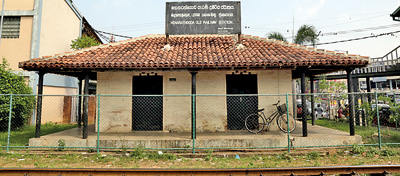Many sites of Gampaha
View(s):Back with another Fun Travel column – our destination this time is Gampaha, which is about an hour long journey from Colombo, along the Kandy Road.
This no doubt will be an interesting travel experience for you, for getting to know the history and folklore associated with various sites we visited and landmarks we saw in Gampaha made it a really exciting tour for us.
Here are some of the highlights!

Pilikuththuwa Cave Temple
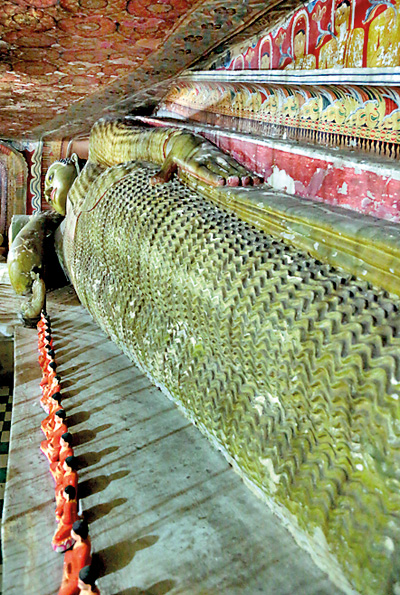 Pilikuththuwa temple is located at a distance of about five kilometres from Miriswatte junction in Gampaha. An ancient monastic cave complex spread approximately across 200 acres, here you find about 78 caves identified and gazetted by the Department of Archaeology.
Pilikuththuwa temple is located at a distance of about five kilometres from Miriswatte junction in Gampaha. An ancient monastic cave complex spread approximately across 200 acres, here you find about 78 caves identified and gazetted by the Department of Archaeology.
Its history spans from pre-historic period to the Kandy era, and in the days gone by this had been used by hermit monks for meditation. Later it was turned into a cave temple (len viharaya). Here you find caves with drip–ledges (kataran) with evidence to suggest that they were used in the 2nd and 3rd Century BC as Sangawasa (abodes of the monks). The temple is conserved by the Department of Archeology due to its historical value.
According to folklore, King Walagamba kept his clothes and jewellery in one of the caves here at the time he was hiding in Gampaha to evade South Indian invasions. Sinhala term for clothes being pili, the place was then known as Pilikuththuwa.
The temple has many interesting aspects. Among them are the monk abodes found beneath the drip-ledged caves, the temple’s unique image house with rare paintings of two Portuguese soldiers and images of Buddhist nuns (bhikkuni), a palanquin (dolawa) used by a monk who visited the temple, a wooden bridge that has Dutch and Kandy period influence.
While in Pilikuththuwa you can climb up to the summit point which is also referred to as the Balum Gala. This is quite an adventurous hike. Folklore suggests, the summit was used as a watch tower by King Walagamba’s guards to alert the king of enemy advancements. Along the way up to the summit, you can explore the network of caves, and a giant ‘pus wela’ creeper. The creeper is believed to be over 400 years old.
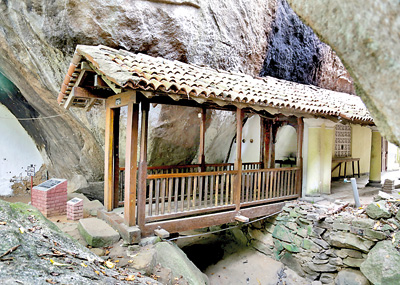
Ambalam
In Gampaha you find quite a few ambalam (wayside shelters). It is said that these ambalam were put up to provide shelter for those who take the route via Urapola to travel to Adams Peak by foot.
Averiyawala Ambalama is one such beautiful structure found in the vicinity of Pilikuththuwa.
An archaeologically protected monument, it is said that King Walagamba once stayed here to break journey and the queen who bathed at the natural pond lost her hair extension (hawariya). The place was then called Hawariyawala, and later it became Averiyawala.
Gal Ambalama in Ambagaspitiya is another archaeologically protected site. This tiled roofed, spacious structure adorned with carved stone pillars is said to be over 1000 years old, although details about its origin are not available.
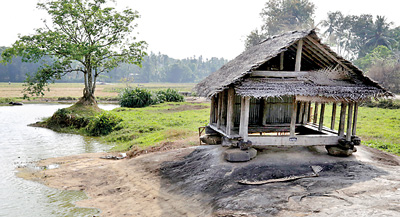
Volleyball statue
This iconic volleyball statue found near the Gampaha railway station is considered a famous landmark. This is symbolic of the reputation that Gampaha has earned as a centre of volleyball.
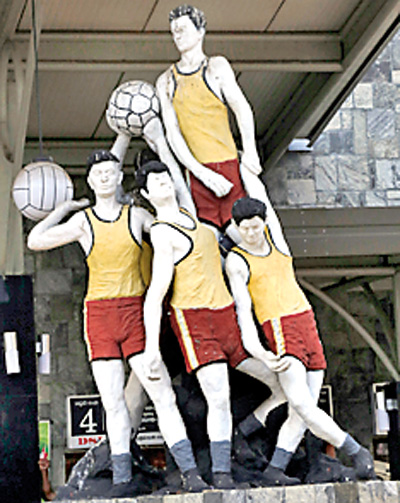
Henarathgoda Botanical Garden
Located in Asgiriya Gampaha, back in 1876, the place was used for experimenting and promotion of rubber seeds brought from Brazil. Here you can still find a part of the roots and the stem of the first rubber tree planted in 1876.
Spread across 43 acres of land, it is a beautifully laid out garden with botanical and horticulture attractions. It consists of wonderful plant collections, flower beds and arches, orchid and anthurium houses, a fernery, a fruit garden and a collection of endemic plants.
It also has plenty of recreational and play areas, a treehouse and lake to go on paddle boat rides.
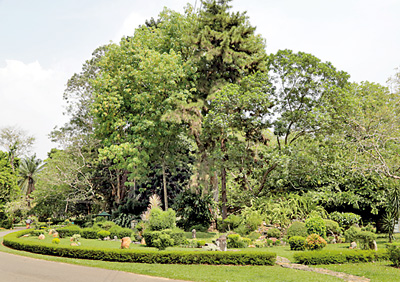
Henarathgoda Old Railway Station
In 1864, the British constructed this railway station to transport tea and coffee to Colombo from Kandy. It is considered one of the oldest stations along the Colombo-Kandy rail route that came into being when train services to Ambepussa first commenced. The place is gazetted as an archaeologically protected monument and conserved by the Department of Archaeology.
Today, this station is no longer in use as there is a modern railway station in close proximity.
